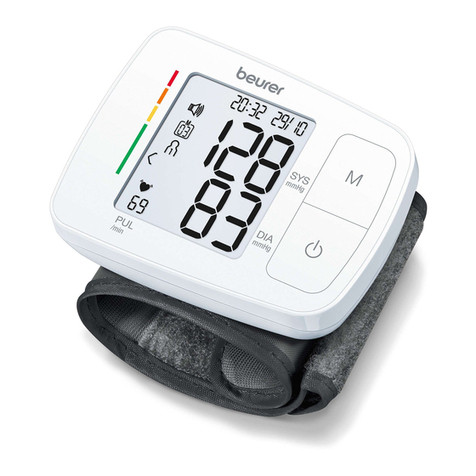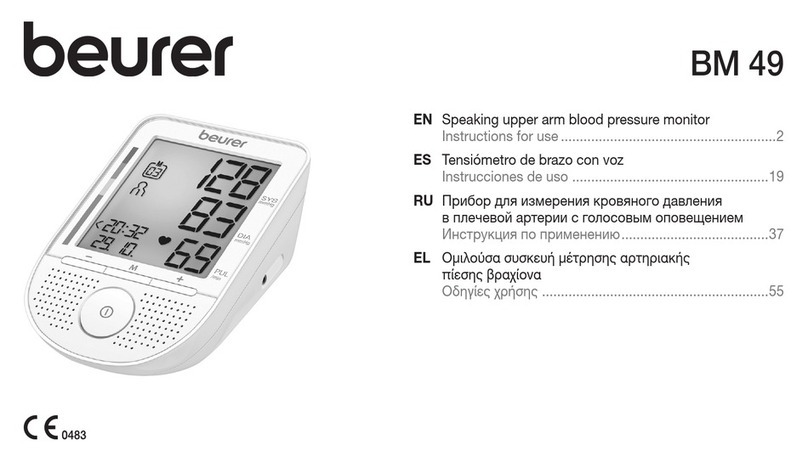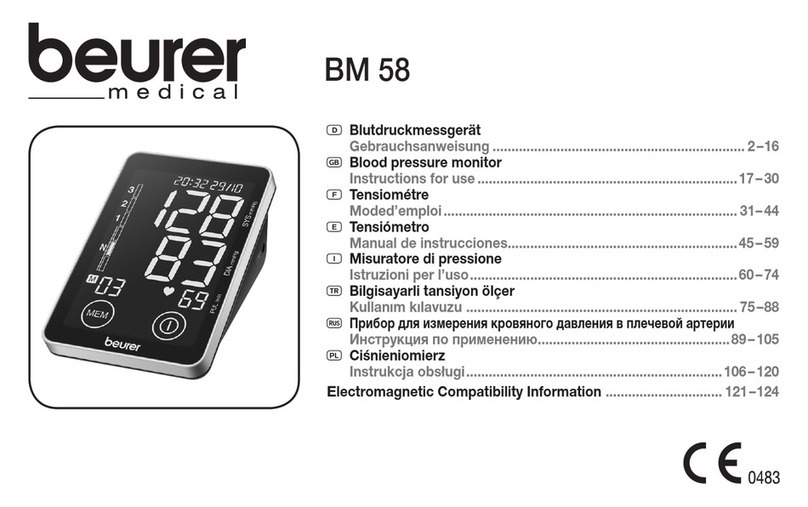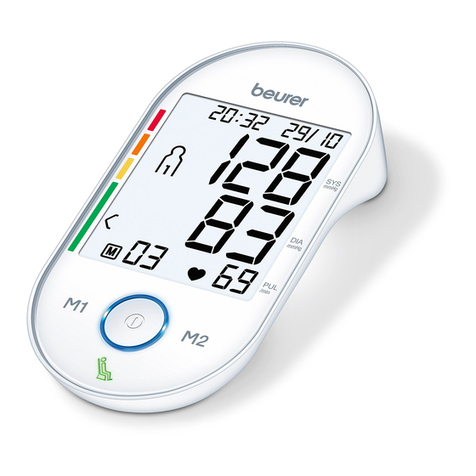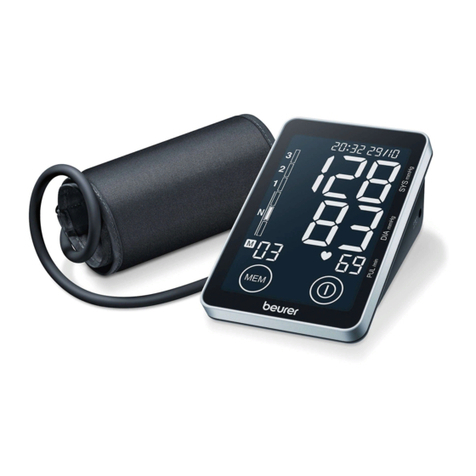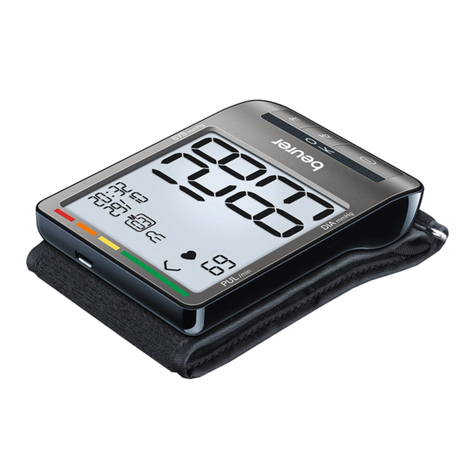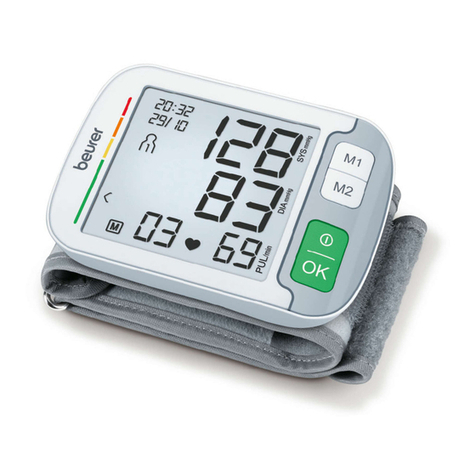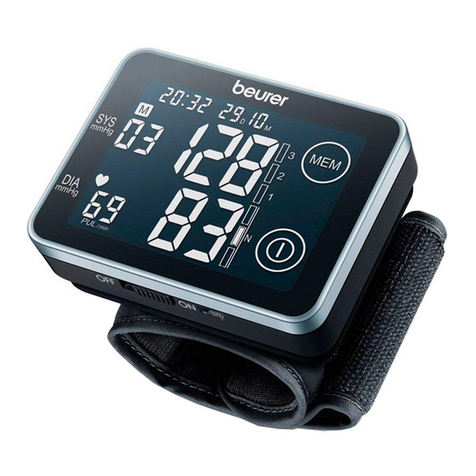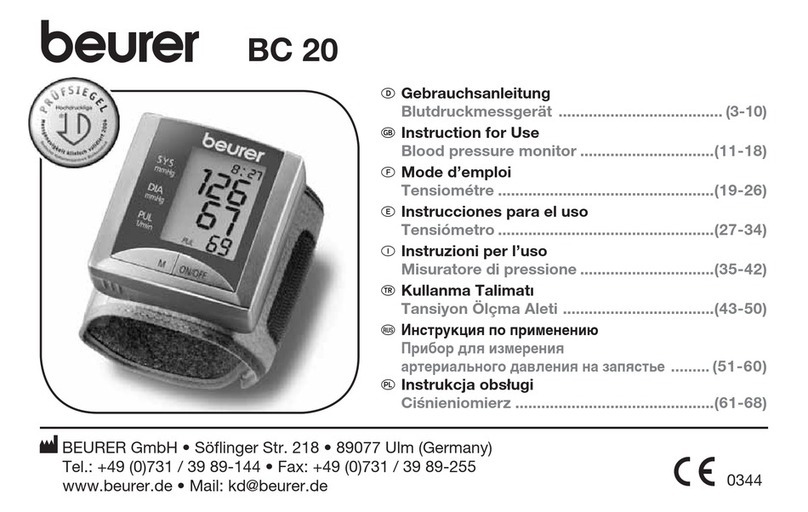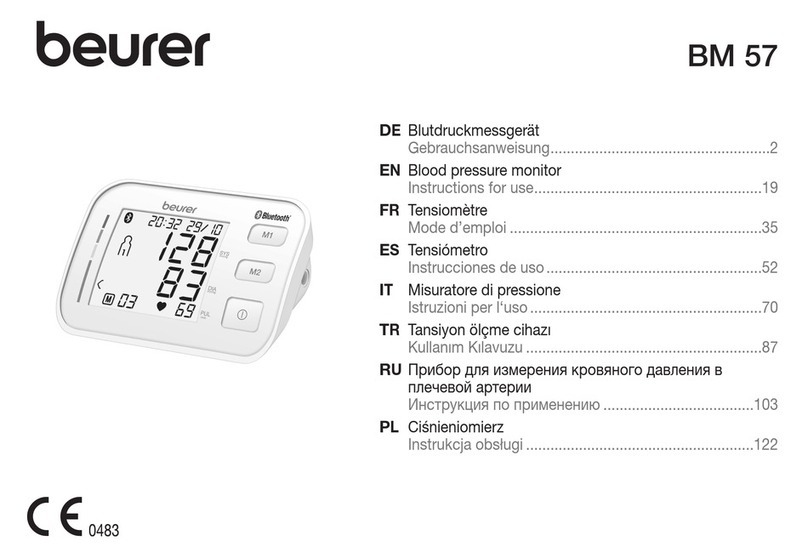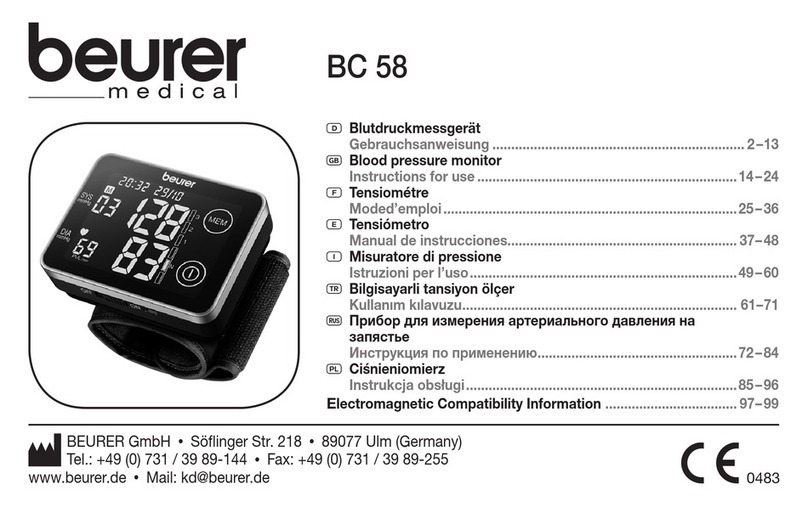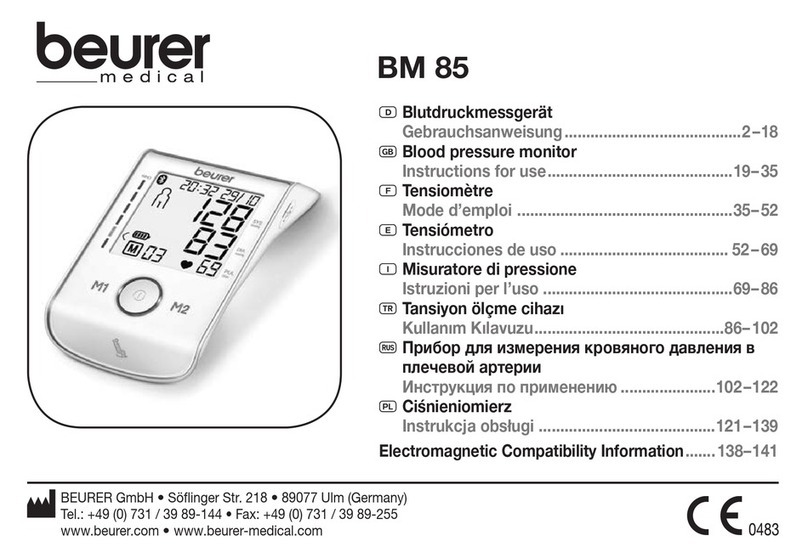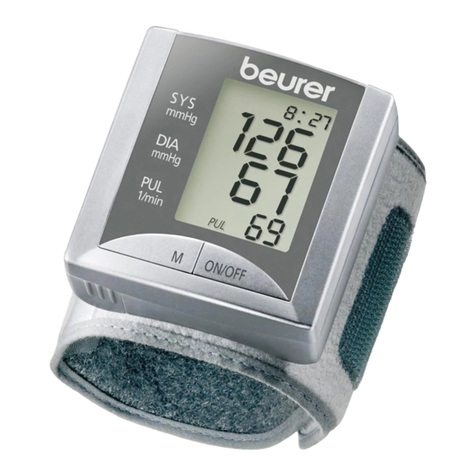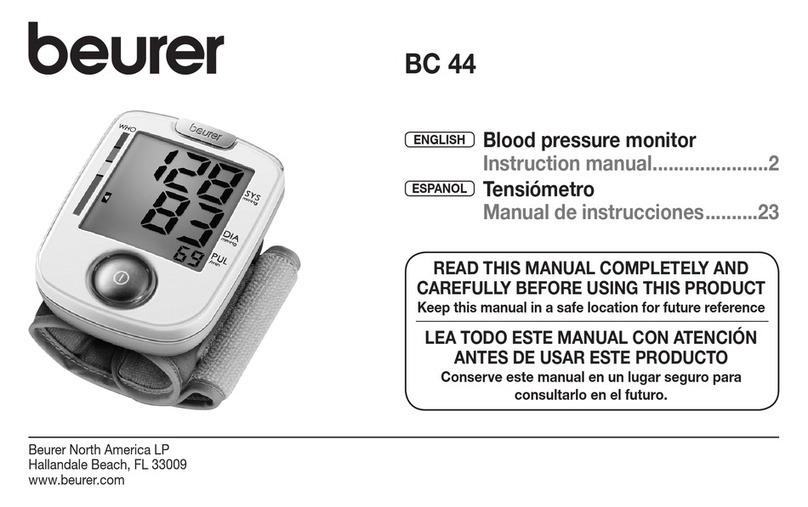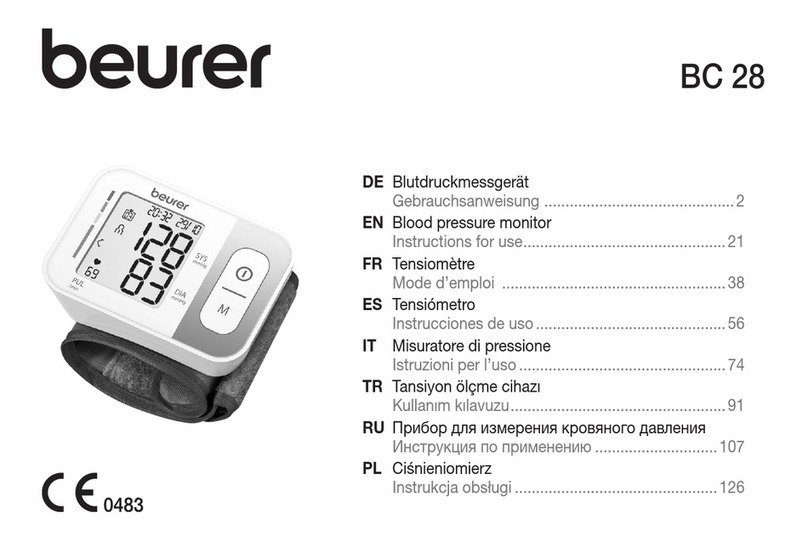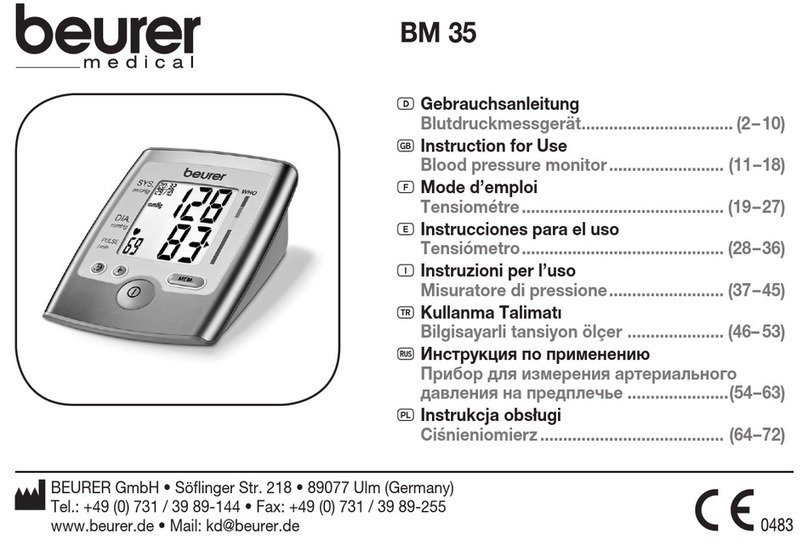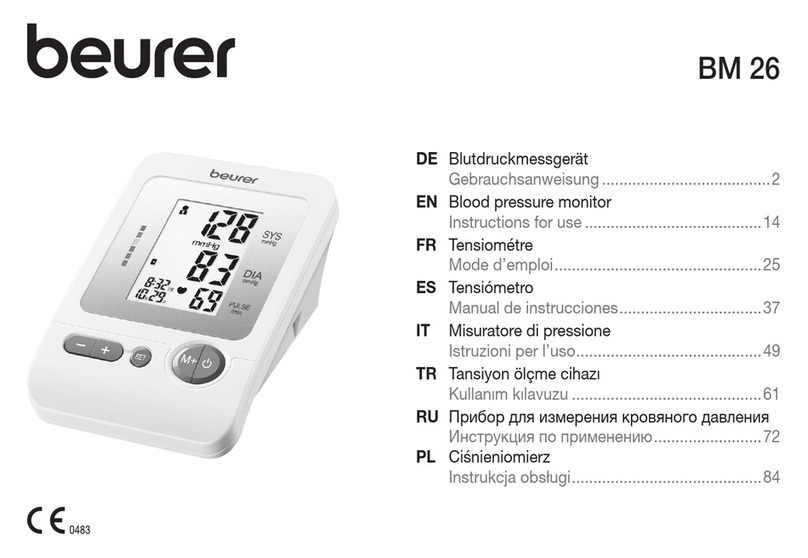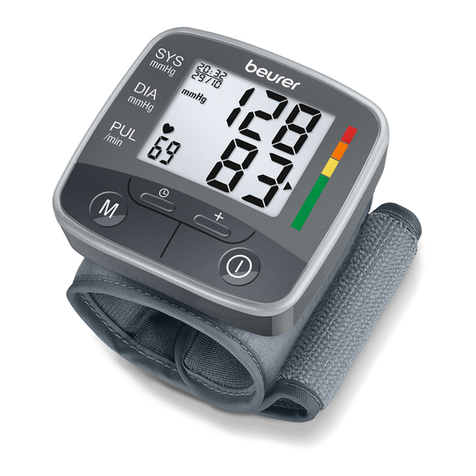5
Electromagnetic interference: Avoid strong electrical or
•
electromagnetic fields in the direct vicinity of the device
(e.g. mobile telephones, microwave ovens) while it is in
operation, as inaccurate measurements may result. To
prevent such interference, use the unit at a sufficient dis-
tance from such devices or turn the devices off.
Do not measure your blood pressure while operating a ve-
•
hicle or in any situation which requires your full attention.
CAUTION:
The device should not be used when your arm has been
•
wounded/injuried or when a catheter has been inserted.
Such use may result in injury.
Remove any kind of upper arm jewelry or the like before
•
taking a measurement. This could cause bruises.
Do not place the arm cuff over heavy clothing (e.g. a jack-
•
et or sweater sleeve) as the blood pressure monitor will
not be able to take a proper measurement and there is
an elevated danger of acquiring hematoma or skin marks
during the course of the measurement.
In case the cuff does not stop inflating, interrupt the mea-
•
surement by pressing the start/stop button and open
the cuff at once.
If a battery has leaked do not touch the battery fluid.
•
Avoid skin contact (e.g. put on protective gloves) and
clean the battery compartment with a dry cloth.
Do not disassemble the unit, it may result in injuries.
•
When applying the arm cuff, make sure there are no wrin-
•
kles in the cuff. This could cause bruises.
Do not exert any kind of pressure on the hose during
•
measurement, e.g. laying your arms or any other object
on the hose. This could cause incorrect measurements.
Blood pressure measurements can lead to temporary
•
marks on the skin at the site of the cuff placement. This
is especially the case in high repetition rates, in hyper-
tonic patients and in patients with weak pulses. In rare
cases a mark may persist for a couple of days. Please
contact your physician about these specific risks of cuff
pressure in your specific case.
For hygienic reasons the cuff is intended only for the use
•
by one person.
NOTICE:
The blood pressure monitor is made up of precision elec-
•
tronic components. Accuracy of readings and the instru-
ment’s service life depend on careful handling. Protect
the unit against hard knocks (e.g. dropping the unit),
moisture, water, dirt, dust, chemicals, extreme hot or
cold temperatures, major temperature fluctuations, di-
rect exposure to sunlight and heat sources which are too
close (e.g. stoves, heating radiators). This may damage
the unit. The device must be stored in the specified ambi-
ent conditions. Please see section “7. Care, maintenance
and storing the instrument” and section “10. Technical
Specifications” for details.
